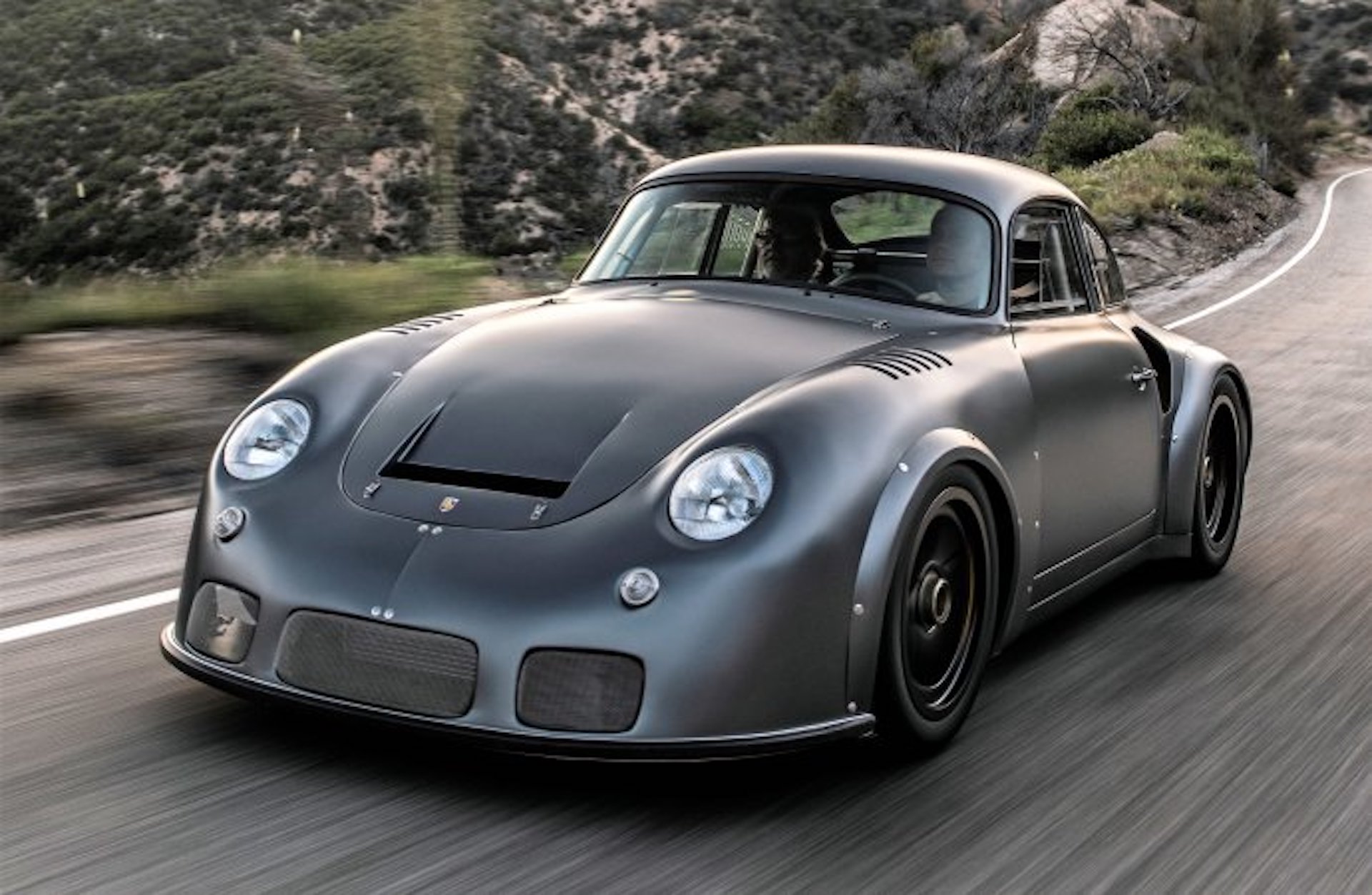Rod Emory and his crew have built something like 150 Porsche 356 “Outlaws,” essentially defining the term for the once-derided, now-admired class of custom performance sports cars from Porsche’s early days.
The team has built Outlaws for major collectors and celebrities, such as the recent 1960 Emory Special, a much-acclaimed 356 custom built for rock star John Oates.

Emory Motorsports' 1960 Porsche 356 RSR merges the 356 with components of a 964
Emory Motorsport also has done high-profile restorations of early Porsches, most notably the unique 1951 Gmund 356/2 with which the nascent German automaker first entered the 24 Hours of Le Mans. The Gmund 2 with its signature aerodynamic wheel spats is considered one of the most important cars in Porsche history.
Now, Emory has rolled out his personal Outlaw challenge, dubbed the 1960 Porsche 356 RSR, which artfully combines a ’60 356 T5 coupe with a 1990 Porsche 964 C2. The result: a totally wild-looking custom that weighs fewer than 2,000 pounds and packs more than 390 horsepower from a twin-turbocharged 2.4-liter flat-4.

Emory Motorsports' 1960 Porsche 356 RSR merges the 356 with components of a 964
The concept for the RSR was spawned in 2012 from a sketch by Emory friend and colleague Greg Macey, according to an Emory Motorsport news release.
“The idea was to create an homage to the Porsche works 935 cars of the 1970s while retaining our Emory 356 Outlaw styling,” Rod Emory is quoted in the release. “Greg did phenomenal sketches, which we posted on Instagram. Momo chief executive Henrique Cisneros reached out and asked what it would take to turn the concept into reality.
“Once we zeroed in on the details, we had a second rendering done by Avedis Djinguelian to serve as a more-representative style guide to the finished product. The actual build time was about four full years.”

Emory Motorsports' 1960 Porsche 356 RSR merges the 356 with components of a 964
Like many of Emory’s Outlaws and so-called custom Specials, the 356 RSR has created some controversy regarding its radical restyling of the classic 356 form. While some critics even in the Outlaw community see it going too far, and not in a good way, others welcome it as representing the next wave of custom Porsches.
“People had strong reactions when we debuted the 356 RSR at Luftgekühlt this past May,” Emory said. “It was too over-the-top even for some of the forgiving purists – something we’re used to after being branded Outlaws by the period-correct owners decades ago – but the car definitely attracted a lot of attention and now serves as a benchmark for what we can do with Porsche’s extremely flexible platforms.”
No one, however, could doubt the masterful fabrication that went into this build. Emory’s artisans compromised the wheelbase of the 356 with the longer 911, while maintaining the later car’s suspension points and tailoring the engine frame section to fit the 356’s opposed-4.

Emory Motorsports' 1960 Porsche 356 RSR merges the 356 with components of a 964
The body retains the steel roofline and doors of the donor 356, thus keeping the coupe’s identifiable silhouette, with the car’s removable nose and tailpiece fabricated out of lightweight aluminum.
The RSR’s startling performance was also considered in the body design, the builder says.
“To relieve wheel-well air pressure, Emory Motorsports added louvers and front fender stand-offs,” according to the news release. “Other custom air-management modifications include stainless mesh grilles for the cooling ducts and intercooler air inlets in the steel section of the rear fenders.
“Final exterior touches are modified Porsche 911 rocker panels and Plexiglas side and quarter windows. The body color is a custom blend of PPG hues that Rod Emory calls Meteorite Matte Metallic.”

Emory Motorsports' 1960 Porsche 356 RSR merges the 356 with components of a 964
Beneath the removable tail section is “the exotic Emory-Rothsport twin-turbo Outlaw-4 engine (which) produced a whopping 393 horsepower on Rothsport Racing’s engine dyno – incredible in a car that weighs only 1,950 pounds.”
The proprietary engine block, from a collaboration between Rod Emory and Jeff Gamroth of Rothsport Racing, is based on the architecture of the dry-sump Porsche 911’s 3.6-liter engine from the 1990s.
“To get the crazy power, Rothsport Racing created a purpose-built fuel-injection system with a one-off intake plenum and twin-plug distributor, managed by a Motec computer,” the release says. “The RSR race-inspired twin-turbo system uses two Garrett GT28R ball-bearing turbos with Turbosmart wastegates, backed by custom intercoolers. A dash-mounted 935-style boost-control knob allows dialing up as much as 1.2 bar boost from the turbos.

Emory Motorsports' 1960 Porsche 356 RSR merges the 356 with components of a 964
“Other Outlaw-4 details include a full-flow oil system with remote filter and cooler, plumbed with XRP lines and fittings. Also, Rothsport Racing fabricated a custom 3-2-1 stainless-steel exhaust system, which ends with a muffler-less straight pipe. The fuel system includes an 18-gallon Fuel Safe fuel cell, cradling a Radium FCST fuel delivery system.”
The modified 911 suspension was built to handle the horsepower boost, the release says, and the interior boasts custom fabrics and Momo components. And while the car includes safety equipment for track use, it is designed to be totally and legally street worthy.
So while Emory’s 356 RSR might not be everyone’s vision of 356 Outlaw beauty, no one can doubt the exceptional effort or incredible performance that went into it, hallmarks of the Emory team’s creations.
This article, written by Bob Golfen was originally published on ClassicCars.com, an editorial partner of Motor Authority.
